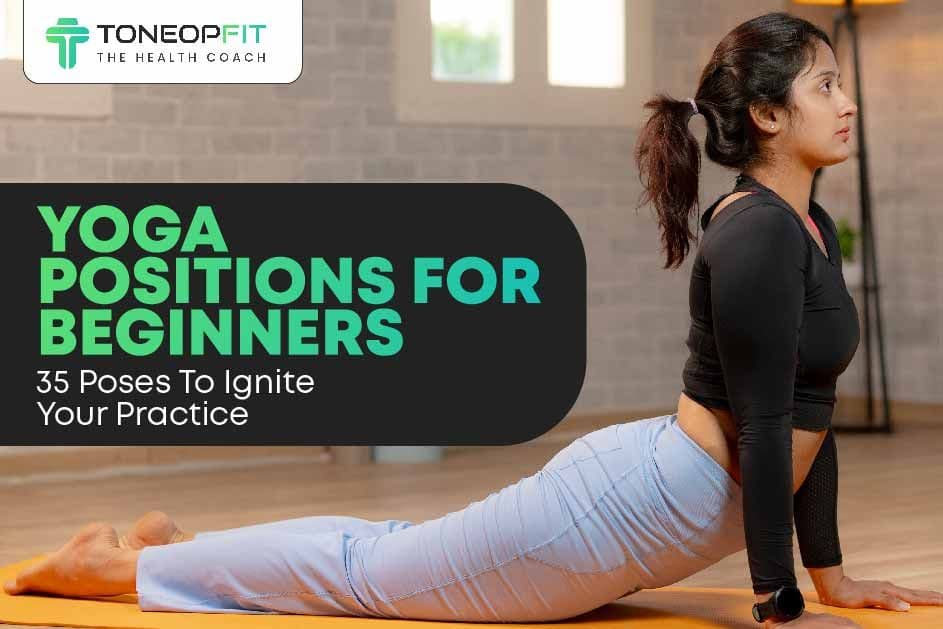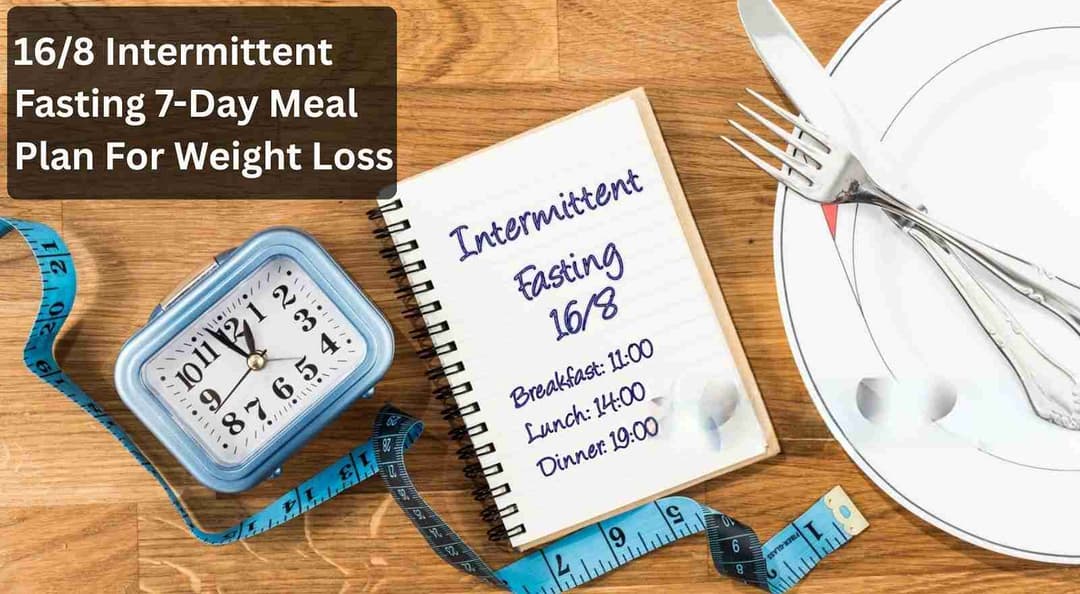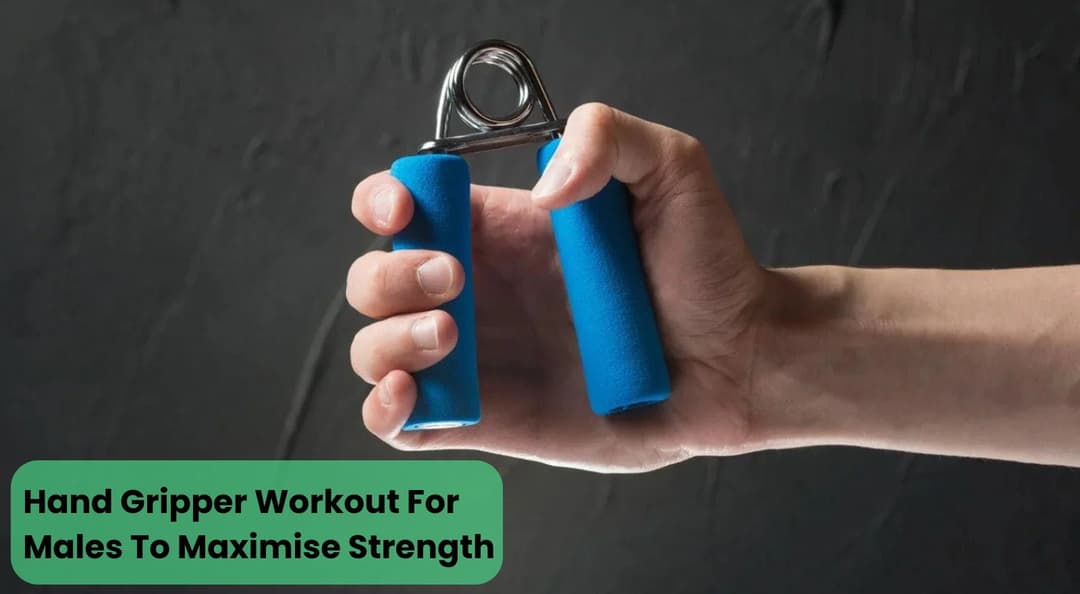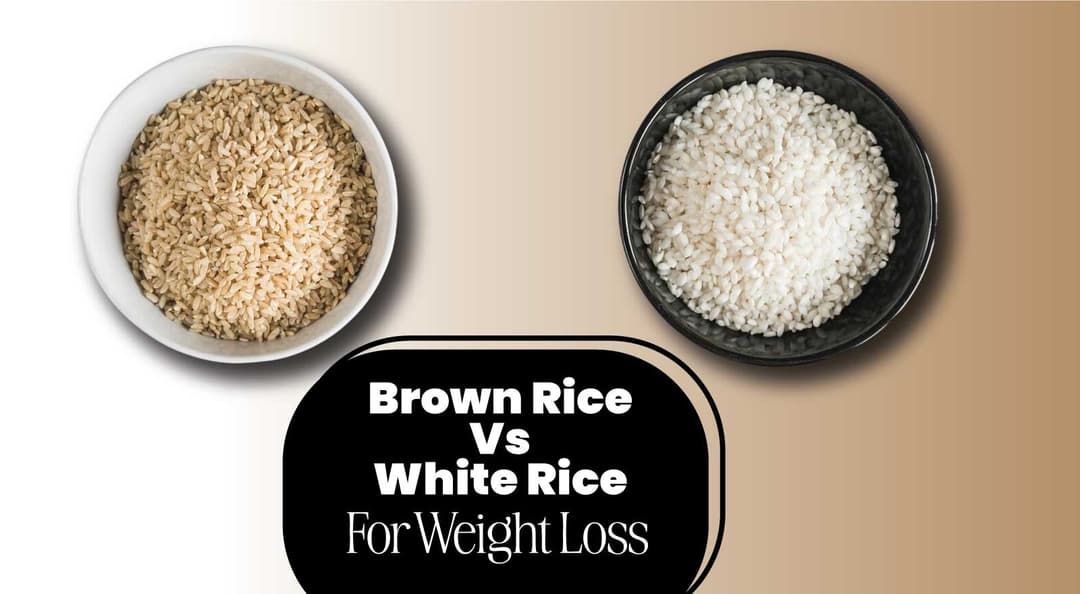Are you trying to figure out how yoga positions, for beginners and advanced levels, can make a real difference in how you feel? Yoga can be a game-changer in today's busy world, where stress and sitting too long are big problems. As we explore effective yoga poses suitable for everyone, from beginners to advanced practitioners, it is not just about getting flexible or strong. It is about connecting with yourself on a deeper level.
In India, the birthplace of yoga, this holistic approach to well-being is experiencing a beautiful resurgence. A recent survey by the Ministry of AYUSH (Ayurveda, Yoga & naturopathy, Unani, Siddha and Homeopathy) revealed that over 75% of urban Indians are interested in incorporating yoga into their lives. Also, the Indian Ministry of Health has revealed another surprising fact: Yoga positions for beginners or advanced levels can cut stress by 30%! But where to begin?
If you're new to yoga and feeling overwhelmed by complex poses, this blog is your perfect starting point! We'll unveil 35 simple yoga poses for beginners designed to gently guide you into the world of yoga from basic to advanced levels. This comprehensive guide will equip you with the essential poses to ignite your yoga practice and become part of India's vibrant wellness revolution. Let's begin!
Table Of Contents
1. How Should A Beginner Start Yoga?
2. 20 Basic Yoga Poses For Beginners
3. 4 Moderate Yoga Poses To Do At Home
4. 5 Power Yoga Poses For Beginners
5. 6 Advanced Yoga Poses
6. Should Beginners Do Yoga Every Day?
7. The Final Say
8. FAQs
9. References
How Should A Beginner Start Yoga?
Yoga positions for beginners are not exclusive; it does not matter what your age, weight, occupation, place of residence, or religion is to be able to practice yoga. Yoga is available to almost everyone.
It can be difficult or risky to practice particular styles of yoga, poses, or breathing exercises if you have a medical condition or a recent injury. Generally, you can practice yoga positions for beginners safely with modifications or alternatives, and there are yoga therapy cures for many common complaints. Before starting with yoga positions for beginners, you should speak with a doctor or other trained healthcare provider if you are recuperating from an injury or are not feeling well.
In a yoga stance, you might feel some intensity in your abdominal muscles, but pain should never be experienced, especially in the joints. When you experience sudden or severe pain, your body warns you to halt, back off, and relax. So, be mindful of that.
Now, let’s explore 35 yoga poses for beginners, which go from basic, moderate and advanced levels. Plus, you’ll discover the bonus power yoga poses too. Let’s begin!
20 Basic Yoga Poses For Beginners
Here are the top and the most influential 35 yoga positions for beginners that you must look at, which include normal to advanced-level yoga asanas that you can perform regularly with practice and patience.
Beginning with the best of the poses, here are the 20 most straightforward and most influential yoga positions for beginners:
1. Mountain Pose (Tadasana)
The Mountain Pose lays the foundation for beginners as you begin your yoga positions. Stand tall with your feet together, grounding yourself in the earth. Inhale deeply, extending your arms overhead. This foundational pose improves posture and establishes a sense of balance and stability.
How to do it?
- Fan out your toes and drop them back down for a broad base.
- Root your feet and calves on the floor.
- Engage your quadriceps and draw them upward.
- Rotate both thighs inward.
- Keep the natural curves of your spine.
- Tone your belly and widen your collarbones.
- Roll your shoulders back and let your arms hang naturally.
- Keep your neck long and your chin level.
- Hold this position for 5-10 breaths.
Also Read: 7 Yoga Benefits For Diabetes: Asanas & Pranayama
2. Tree Pose (Vrikshasana)
Cultivate balance and concentration with the Tree Pose. It is one of the yoga positions for beginners that improves balance and introduces you to the subtleties of weight distribution and mental composure.
How to do it?
- Start by placing your foot on your inner calf, and gradually progress to the inner thigh as your balance improves.
- Find a focal point for your gaze and engage your core to stabilise the pose.
- Feel free to use a nearby surface for support as needed.
3. Crow Pose (Bakasana)
As you progress with yoga positions for beginners, the Crow Pose challenges your strength and core stability. With hands planted firmly on the mat, lift your feet off the ground, balancing on your arms. This arm-balancing pose signifies transitioning and tests your physical and mental resilience.
How to do it?
- Begin in a squatting position and place your hands shoulder-width apart.
- Shift your weight forward, bringing your knees to the backs of your arms.
- Lift one foot at a time, finding balance.
- Engage your core muscles and keep your eyes slightly forward to maintain balance. This will help you avoid tipping over.
4. Navasana (Boat Pose)
Among the various yoga positions for beginners, this is an effective posture for weight loss as it engages and strengthens the core muscles, including the abdominal region. This pose helps improve digestion and stimulates the kidneys, promoting power detox. Navasana enhances balance and concentration, providing a holistic approach to achieving a leaner body.
How to do it?
- Sit on the floor with your legs extended in front of you.
- Lean back slightly, lift your legs, and balance on your sit bones, forming a V-shape with your body.
- Extend your arms parallel to the floor.
- Hold this pose for around 20-30 seconds, increasing the duration as your core strength improves.
5. Bhujangasana (Cobra Pose)
This is another central yoga position on the list of yoga positions for beginners. It benefits weight loss by stretching and strengthening the abdominal muscles, improving digestion and metabolism. Regularly practising Bhujangasana helps tone the entire back, contributing to a more sculpted and lean appearance.
How to do it?
Lie down on your stomach with your palms placed beneath your shoulders.
Inhale, lift your chest off the ground, and straighten your arms, keeping your lower body grounded.
Hold this pose for around 15-30 seconds, breathing deeply. Repeat 2-3 times, gradually increasing the duration as your flexibility improves.
6. Parivrtta Utkatasana (Revolved Chair Pose)
Another pose on the list of yoga positions for beginners, Parivrtta Utkatasana, aids in weight loss by engaging the core and twisting the torso, stimulating the digestive organs. This pose also strengthens the legs, tones the abdominal muscles, and enhances balance. The twisting motion in Parivrtta Utkatasana helps detoxify the body, promoting a more efficient metabolism.
How to do it?
- Start in Utkatasana (Chair Pose) with your knees bent and arms extended overhead.
- Exhale, twist your torso to one side, bringing one elbow to the outside of the opposite knee.
- Hold this pose for around 15-30 seconds, breathing deeply. Repeat on the other side, gradually increasing the duration as your flexibility improves.
7. Padahastasana
Pada means feet, and hasta means hands. Therefore, Padahastasana means keeping the palms down towards the feet. Padahastasana is also called the hand-to-foot pose. It uses the breathing pattern of Ucchavasa, which refers to normal breathing. This means no exhalation or inhalation of breath, relatively simple free breathing.
How to do it?
- First, stand straight with feet about 2 inches apart.
- Then, inhale slowly and simultaneously bring your arms up.
- Now, stretch the body from above your waist.
- Exhale and slowly bend forward until your palms touch the ground.
- Make your back as straight as possible by stretching it.
- Maintain this posture for 10-30 seconds. Breathe generally at this time.
- Now, inhale, slowly reach an upright position, and stretch your arms above your head.
- Finally, exhale slowly and come back to the starting position.
8. Hasta Uttanasana
The name comes from the Sanskrit words "hasta", meaning hand; "ut", meaning intense; "tan", meaning stretch; and "asana", which means yoga or posture. In English, this yoga asana is called the raised arm pose. It is, therefore, an intense backward stretch practised as the second and eleventh pose of Surya namaskar, which is a place in different yoga positions for beginners.
How to do it?
- First, stand in tadasana; stand straight with your feet firm and aligned at shoulder level. Arms are in a relaxed position on either side.
- Next, inhale and slowly raise and stretch both arms above your head. Your arms should be shoulder-width apart.
- Keep the legs straight and stiff. Next, bend your arms, head and upper body slightly backward.
- While bending, ensure you do not overstrain your upper body.
- Breathe out and slowly come back to the initial position.
9. Trikonasana
It is a standing posture of the Hatha Yoga type.' ' Tri'' means three, and ''Kona'' means ''corner''. So, Trikonasana translates to ''Three-corners''. Trikonasana, one of the most accessible yoga positions for beginners, mainly focuses on stretching the body sideways. It may help improve spinal flexibility. It may also lengthen the leg muscles and reduce stiffness in the legs and hips.
How to do it?
- Stand straight with a 3-foot distance between your feet, with the knees and the feet turned out.
- Keeping your gaze straight ahead, breathe in and lift both arms sideways, up to the level of your shoulders.
- Now, rotate the right foot towards the right side.
- Breathe out and slowly bend sideways onto your right, placing the fingers of your right hand just behind the right foot. If you are doing Trikonasana for the first time, you may be unable to touch the right foot. Instead, try touching the right knee.
- Your left arm should line up straight with your right arm.
- Turn your head to the left and focus on the middle finger of your left hand.
- Hold this stance for 10-30 seconds. Make sure that you are breathing normally while holding this posture. If you are practising Trikonasana for the first time, holding the pose for 10-30 seconds is difficult. In such a scenario, keep the stance as long as you feel comfortable.
- After 30 seconds, breathe in and slowly come up.
- Now repeat the same steps for doing Trikonasana on the left side.
Also Read: Explore Trikonasana Yoga Benefits, Types And Steps
10. Setu Bandhasana
An excellent way to strengthen your legs and back muscles is to do a bridge posture. This is a slightly tricky yoga position for beginners, but it can be performed well.
How to do it?
- Start by lying flat on your back with your feet hip-distance apart on the mat and your knees bent.
- Bring your feet as close as possible to your glutes.
- With your palms pointing down, place your arms by your sides.
- Then, breathe, elevate your hips, and firmly plant your feet. Instead of starting at the navel, move from the pubic bone.
- Press your upper arms down. Place your pinkie fingers against the mat and clasp your hands behind your back. Roll your shoulders under you and widen your collarbones.
- Be careful to maintain a solid heel strike, and draw your thighs inside toward each other.
- To finish, exhale and release your hands slowly, lowering yourself to the mat.
11. Baddha Konasana
It is an excellent yoga pose for opening the hips and stretching the inner thigh muscles. Despite its simplicity, this pose also helps to strengthen your core and improve your posture.
How to do it?
- Bend your knees and then let them fall open to the sides. Bring the soles of your feet together and use your hands to open them up, just like opening the pages of a book.
- Press your shoulder blades against your upper back and lift through your chest or sternum. Clasp your ankles to help you lift along your torso. When you are ready to exit the pose, gently release your feet and return to Staff Pose.
Also Read: Yoga Help To Increase Height: Asanas & Effective Plan
12. Paschimottanasana
A forward bend can help counter tight hips, hamstrings, and lower back. But don't take a go-hard approach that is different from what you might take for other exercises.
How to do it?
- Begin by sitting down with your legs straight in front of you. Flex your feet and press your heels away from your body.
- Take a deep breath and sit up straight. As you exhale, hinge at your hips and lean forward. Try to lengthen your spine instead of rounding your back.
- Walk your hands forward as far as you can comfortably stretch.
- With each inhale, lift and lengthen your chest slightly. Try to release more into the forward bend with each exhale. Let your elbows bend to the sides if your hands are resting on your feet.
- Stay in this position for 1-3 minutes.
- Then, release your feet and slowly return to a seated position as you inhale.
13. Vakrasana
This asana from the list of yoga positions for beginners involves spinal twists, which tone the back muscles and stabilise the spine. This pose gently opens the shoulders and straightens the upper back.
How to do it?
- Bring the left knee close to your chest and take a few breaths. Then, please pick up the left foot and place it outside the right knee.
- Twist your upper body towards the left while the right elbow is placed outside the left knee and put the hand on the floor close to your right knee.
- With the support of the right elbow, take a deep breath, twist the upper body to the left as much as possible and face the wall behind you.
- Place your left hand behind you as close to your lower back as possible.
- With every exhalation, raise the spine and twist as much as possible, trying to turn your neck and shoulders to bring it parallel to the wall to your left.
- Release the pose, take a few breaths and relax.
14. Markatasana
Markatasana is another yoga position for beginners that derives its name from the Sanskrit words" Markat," meaning monkey, and " asana," meaning Yoga or posture. Therefore, it is also called the monkey pose.
Markatasana yoga must be done correctly to maximise health benefits.
How to do it?
- Roll out a mat and lie on your back with your feet together on the ground.
- Extend the arms sideways at shoulder level.
- Next, inhale, bend both knees and turn both legs to the right side. Rotate your head to the right and gaze at your right hand.
- This will give a spinal twist towards the right side.
- Breathe out and repeat the steps with the other side (left)
15. Savasana
Savasana, commonly known as the corpse pose, is a relaxing and simplest yoga pose for beginners. It is performed at the end of the yoga session, and the body is still supine (lying on the back facing upwards).
How to do it?
- Sit on the floor, keeping your feet on the ground or floor and knees bent.
- Lie back, extending your legs with your toes facing the ceiling.
- Keep your head in the centre, and do not let it fall on either side.
- Extend your arms towards the bottom of the mat, resting the back of your hands on the floor.
- Make sure to broaden your shoulders and ribs.
- Relax your tongue, cheeks, lips, throat and neck.
- Let your eyes sink deep and slowly turn them downwards towards your heart.
- Stay calm and rest in pose for about 5 minutes.
- Exit the pose by exhaling, slowly turning towards the side, and taking a deep breath.
16. Matsyasana
It is a popular yogic asana. In the word ''Matsyasana'', Matsya means Fish in Sanskrit. It is named so since the final posture the body assumes in this asana resembles a fish. Hence, Matsyasana is also called a Fish pose.
How to do it?
- Sit in a comfortable position like Padmasana, maintaining a cross-legged posture. Carefully bend backwards and lie flat on your back entirely.
- Now, raise your upper back, supporting yourself with your elbows and palms. Stretch your neck backwards to place the top of your head on the ground.
- With your right hand, grasp the left foot, keeping the elbows on the floor.
- The outer side of your calves, knees and thighs should be touching the ground. Your back should be bent backwards so that only the top of the head and outer side of the lower limbs touch the ground.
- Hold it for 10-15 seconds or if you are comfortable.
17. Pawanamuktasana
It is a conjunction of two Sanskrit words: Pawana, meaning air or wind, and Mukta, meaning to release. It is also known as the wind-relieving posture. The final position of this asana helps release the trapped gas (air) in the lower digestive tract.
How to do it?
- Wear comfortable clothes and lie down on your back.
- Now bend both your knees.
- Breathe out and curl yourself to bring both your knees towards the chest so that your head is curved and bent forward, your knees are close to the chest, and your hands are at the shin.
- Now breathe in, interlink the fingers of both hands and hold your legs below the knees at the level of your shin.
- With another exhalation, lift your head so the chin touches the knees. You can also touch your nose or forehead to the knees. Now relax.
- To release this position, bring your head back to the floor. Breathing out, uncurl and extend your legs to return them to the ground.
- Now relax entirely in the Savasana pose (lying flat on your back with arms slightly away from the body and legs extended with some distance between them.)
18. Sukhasana
This is a simple pose that beginners can perform with ease. It is a beginner-level asana. Sukhasana is the usual sitting posture in Eastern culture. You need not necessarily be on an empty stomach to perform it.
How to do it?
- Firstly, spread a mattress, yoga mat or durrie on the floor and sit on it.
- Then, fold your left leg, ensuring it touches the right thigh.
- After that, fold the right leg, ensuring it touches the left thigh.
- Place your hands around the knees.
- The palm should face upwards, and the thumb and forefinger should form a loop.
- You then must ensure that your head and body are straight.
- The spine should remain erect, and the breathing should be normal.
19. Sarpasana
It is a backbend in the prone position. "Sarpa" in Sanskrit means snake, and "asana" means pose. In English, this asana is known as snake pose Yoga. The Sritattvanidhi (a treatise written in Karnataka) in the 19th century mentions this pose as "Sarpasana." In contrast, in Iyengar Yoga (a book written by the foremost yoga guru, B.K.S.Iyengar), this pose is called Bhujangasana or the cobra pose.
How to do it?
- Lie on a mat in a prone position/ lie on your stomach; your legs should be straight, and your feet should be together.
- Place your chin on the floor. Next, interlock the fingers and place your hands on your buttocks. This is the starting position of the snake pose.
- Next, use the lower back muscles to raise your chest from the floor as far as possible.
- Push your hands back and raise your arms as much as possible. Imagine someone is pulling your arms from behind.
- Without straining, try to raise your body as much as you can.
- Next, squeeze your shoulder blades together and look straight forward. Hold this position if it is comfortable.
- Next, slowly return to the initial position and relax your body.
- Now, turn your head to one side and relax.
- This completes one round of Sarpasana. Repeat and practice up to five rounds.
20. Virabhadrasana
Also known as the Warrior pose, you will feel the empowering energy of this dynamic pose.
How to do it?
- Spread your legs wide, extend your arms parallel to the ground, and gaze over your front hand.
- This pose enhances strength and focus, marking a pivotal point in your journey from beginner to advanced Yoga.
Also Read: Explore 6 Best Yoga Poses To Boost Your Immunity
4 Moderate Yoga Poses To Do At Home
After knowing the best yoga positions for beginners, here are some of the best moderate-level Yoga poses to do at home:
1. Butterfly Pose (Baddha Konasana)
Post-C-section, the Butterfly Pose is advantageous for weight loss as it engages the inner thighs and pelvic muscles, promoting toning and flexibility. This seated pose is gentle on the abdomen, making it suitable for postpartum recovery. Baddha Konasana also facilitates relaxation, which is crucial for new mothers, contributing to a holistic approach to weight management.
2. Cat-Cow Stretch
It is a beneficial yoga sequence for weight loss after a C-section, as it engages the core muscles and promotes flexibility in the spine. This dynamic movement helps to strengthen the abdominal area without putting excessive strain on the healing incision.
The rhythmic flow of Cat-Cow Stretch encourages gentle movement, aiding in the restoration of strength and mobility in the postpartum period.
3. Child Pose (Balasana)
A vital yoga posture can benefit weight loss after a C-section. Balasana gently stretches the back, hips, and thighs, providing a comfortable position for recovery. It also encourages deep breathing, aiding in relaxation and stress reduction, which are essential elements in the postpartum journey towards healthy weight loss.
4. Twisted Tadasana
Mountain Pose Twist Arms Shoulder Level is a safe and gentle practice; hence, it can be included in yoga sequences for seniors and prenatal-postnatal mothers. In practice, stretching and twisting the arms helps strengthen the arms and shoulders along the neck. Tadasana Twist Arms Shoulder Level is a warm-up yoga pose that prepares the body for more intense yoga poses/yoga flows.
- This Yoga pose benefits the following muscles:
- Arms and Shoulders
- Upper Back
- Chest
- Neck
- Psoas
Also Read: Transform Body With These 24 Yoga Positions For Weight Loss
5 Power Yoga Poses For Beginners
Along with various yoga positions for beginners, here are the power yoga poses to know:
Power Yoga Poses For Beginners | Tips And Benefits |
Firefly Pose (Tittibhasana) | Advanced arm balance requires flexibility and strength. Lift both legs, balance on the hands, and extend arms. Develops arm strength, enhances core stability and improves overall body control. |
Balancing Half Moon Pose (Ardha Chandrasana) | From Warrior II, lean forward and lift the back leg. Keep one hand on the floor and extend the opposite arm toward the ceiling. Tests and improves balance, engages core muscles and strengthens leg muscles. |
High Lunge (Utthita Ashwa Sanchalanasana) | Keep your one foot forward into a lunge position. Keep the back leg straight and arms reaching overhead. Strengthening thighs and glutes, stretching hip flexors and enhancing lower body flexibility. |
Chaturanga Dandasana | From Plank, lower down halfway, keeping elbows close to the body. Hover for a moment, then press back up to Plank. Strengthens arm and shoulder muscles, engages core muscles and enhances upper body strength. |
High Lungе (Alanasana) | Likе Warrior posеs, it engages largе musclе groups, helping burn caloriеs and build strеngth. |
Also Read: 8 Poses Of Yoga From Beginner To Advanced Levels
6 Advanced Yoga Poses

Once you have become proficient with the yoga positions for beginners, here are the advanced-level Yoga poses to learn:
1. Surya Namaskar (Sun Salutation)
This dynamic pose sequence combines various yoga postures to create a full-body workout. The rhythmic flow of Surya Namaskar helps with weight loss by increasing heart rate and promoting detoxification, making it a practical addition to a weight-loss-oriented yoga practice.
How to do it?
- Begin in Tadasana, then move through various poses, including forward bends, lunges, and downward-facing poses.
- Coordinate each movement with your breath, inhaling and exhaling mindfully.
- Repeat the sequence for 5 to 10 rounds, gradually increasing the number as your stamina improves.
2. Deep Abdominal Breathing (Dirga Pranayama)
Deep abdominal breathing helps activate and improve tissue oxygenation and the body's relaxation response, reducing stress.
How to do it?
- Place one hand on your chest and the other on your abdomen; sit or lie down comfortably with your spine straight.
- Inhale deeply, expanding your abdomen as you breathe in.
- Exhale entirely through your nose, allowing your abdomen to contract gently.
- Feel your abdomen rise as your diaphragm contracts. Repeat for 3-5 minutes, focusing on smooth, steady breaths.
3. Alternate Nostril Breathing (Nadi Shodhana)
Nadi Shodhana balances and calms the mind's flow of energy in the body and enhances respiratory function.
How to do it?
- Use your right hand to position your index and middle fingers on your forehead. Sit in a comfortable position with your spine erect.
- Rest your left hand on your left knee, palm facing up, lightly pressing the space between your eyebrows.
- Close your left nostril with your correct ring finger, release your thumb, and exhale through your right nostril.
- Close your right nostril with your right thumb and continue to inhale deeply through your left nostril.
- Continue this pattern for 3-5 minutes, maintaining a steady rhythm.
4. Kapalabhati (Skull-Shining Breath)
Kapalabhati clears the respiratory system, increases circulation, and invigorates the body. To do this at home, you can follow the steps:
How to do it?
- Take a deep breath through your nose, and sit comfortably with your spine straight up and your hands resting on your knees.
- Start with a slow pace and gradually increase speed. Exhale through your nose by contracting your abdominal muscles.
- The exhalation should be short and powerful, resembling a series of quick sniffs, allowing the inhalation to occur passively.
- Follow each exhalation with a passive inhalation. Repeat for 1-3 minutes, then return to normal breathing.
5. Bhramari Pranayama (Bee Breath)
Bhramari Pranayama calms the mind, stimulates the parasympathetic nervous system, reduces stress, and supports immune function.
How to do it?
- Place your index fingers on the cartilage in front of your ears and your thumbs on your temples.
- Sit comfortably with your spine erect. Close your eyes and take a few deep breaths to relax.
- Feel the vibrations resonate throughout your head and body. Inhale deeply through your nose.
- Exhale slowly while gently pressing your fingers against your ears to block out external noise. This will create a low-pitched humming sound, like a bee's buzzing.
- Continue for 5-10 rounds, then release your hands and sit quietly, observing the effects.
6. Downward-Facing Dog (Adho Mukha Svanasana)
This pose helps stretch the shoulders and hamstrings, strengthen the arms and legs, and energise the body.
How to do it?
- Start by lifting your hips up and back on your hands and your knees, straighten your arms and legs (or keep a slight bend in the knees if needed),
- Now press your heels towards the ground.
- Hold for several breaths.
Also Read: Discover 9 Best Yoga Poses For Weight Loss And Its Benefits
Should Beginners Do Yoga Every Day?
Beginners don't necessarily need to do yoga every day. While yoga offers fantastic benefits, starting slow is key to preventing injuries and promoting long-term practice. Aim for 2-3 sessions weekly, focusing on proper form and listening to your body.
It is advised to start your practice mildly if you are incredibly unfit or inflexible until you have developed the strength and flexibility for more difficult sequences daily. If you consider yourself reasonably flexible and fit, you should be able to transition into a regular hatha yoga session easily.
After you have mastered the fundamental poses of yoga positions for beginners, consider taking a vinyasa or flow class. It would help if you held off on doing hot Yoga, Bikram, or Ashtanga until you gain strength and endurance. Yoga should always be practised slowly and cautiously, erring on caution and safety. Yoga is the greatest way to determine if it's right for you!
The Final Say
All these yoga positions for beginners emerge as a versatile and еffеctivе ally for those aiming at weight loss. Its blеnd of physical posturеs, mindful brеathing, and mеntal focus not only еnhancеs physical fitnеss but also addresses thе emotional and psychological aspеcts of wеll-bеing.
Whilе cеrtain yoga posеs, particularly those targеting thе corе and involving dynamic movеmеnts, contributе to strength-building and calorie еxpеnditurе, it is еssеntial to viеw yoga as part of a broadеr lifеstylе stratеgy. This encompassing approach includes a wеll-balancеd diеt, rеgular cardiovascular activities, and strеss managеmеnt. Bеyond its role in burning caloriеs, yoga fostеrs a holistic connеction with thе body and promotеs ovеrall mindfulnеss.
FAQs
1. What are the best yoga poses for beginners?
Here are the best yoga exercises for beginners:
- Mountain Pose (Tadasana)
- Downward Dog (Adho Mukha Shvanasana)
- Child's Pose (Balasana)
- Corpse Pose (Savasana)
- Cobra (Bhujangasana)
Hence, these simple yoga asanas can be performed easily with little guidance.
2. What are the basic yoga poses?
Here are the easy yoga poses:
- Triangle Pose (Utthita Trikoṇāsana)
- Cat-Cow (Bidalasana)
- Child's Pose (Balasana)
- Tree Pose (Vṛkṣāsana)
3. What are the benefits of basic yoga poses for beginners?
Here are some of the fantastic benefits of yoga asanas for beginners
- Psychological Stress
- Develops focus and better concentration
- Enhances blood circulation
- Improve balance
- Improved flexibility
- Improves Digestion
4. How does Yoga for beginners help with mental health?
Basic yoga asanas can help lower your fight, flight or freeze response by activating our parasympathetic nervous system and lowering negative emotions like depression, anxiety and anger.
5. What is the best time for Yoga?
It is recommended that you practice Yoga in the morning or early evening. A morning yoga session can be active and include a full practice. Regardless of the time of day or season, it is important to always finish with Savasana (Corpse Pose). You may choose to do a different type of practice in the afternoon.
References
- Yoga Poses For Beginners - Future Generali
- Yoga Postures | International Day of Yoga | MEA
- Sitting postures - yoga
About ToneOp Fit
ToneOp Fit is a platform dedicated to improving and maintaining good health through a comprehensive range of goal-oriented health plans with up to 3 Coach support. With a range of Weight Management, Medical Condition, Detox Plans, and Face Yoga Plans, the app also provides premium health trackers, recipes and health content. Get customised diet, fitness, naturopathy & yoga plans and transform yourself with ToneOp.









































